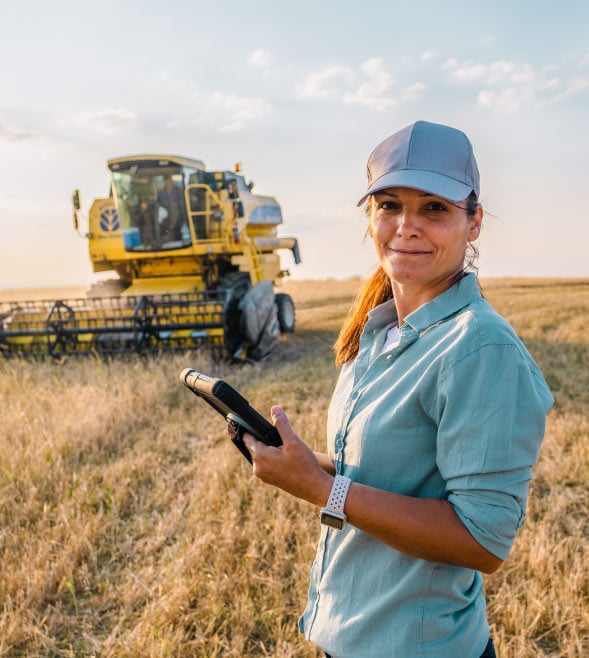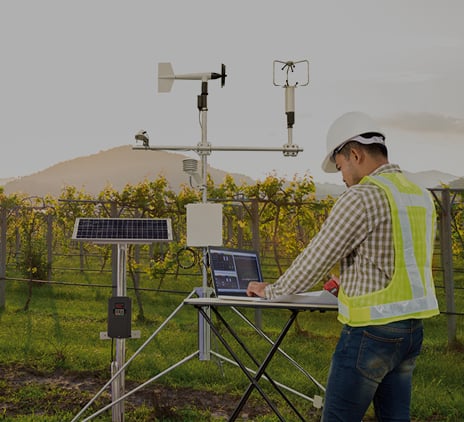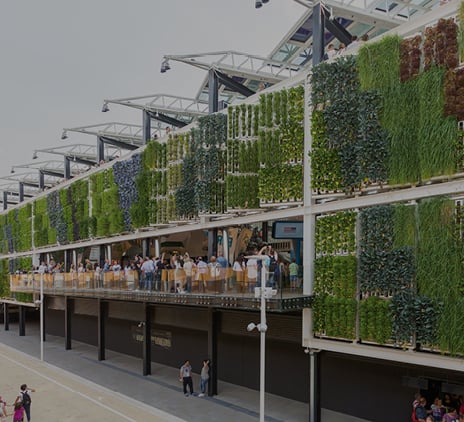-
Financial reporting and accounting advisory services
You trust your external auditor to deliver not only a high-quality, independent audit of your financial statements but to provide a range of support, including assessing material risks, evaluating internal controls and raising awareness around new and amended accounting standards.
-
Accounting Standards for Private Enterprises
Get the clear financial picture you need with the accounting standards team at Doane Grant Thornton LLP. Our experts have extensive experience with private enterprises of all sizes in all industries, an in-depth knowledge of today’s accounting standards, and are directly involved in the standard-setting process.
-
International Financial Reporting Standards
Whether you are already using IFRS or considering a transition to this global framework, Doane Grant Thornton LLP’s accounting standards team is here to help.
-
Accounting Standards for Not-for-Profit Organizations
From small, community organizations to large, national charities, you can count on Doane Grant Thornton LLP’s accounting standards team for in-depth knowledge and trusted advice.
-
Public Sector Accounting Standards
Working for a public-sector organization comes with a unique set of requirements for accounting and financial reporting. Doane Grant Thornton LLP’s accounting standards team has the practical, public-sector experience and in-depth knowledge you need.
-
Tax planning and compliance
Whether you are a private or public organization, your goal is to manage the critical aspects of tax compliance, and achieve the most effective results. At Doane Grant Thornton, we focus on delivering relevant advice, and providing an integrated planning approach to help you fulfill compliance obligations.
-
Research and development and government incentives
Are you developing innovative processes or products, undertaking experimentation or solving technological problems? If so, you may qualify to claim SR&ED tax credits. This Canadian federal government initiative is designed to encourage and support innovation in Canada. Our R&D professionals are a highly-trained, diverse team of practitioners that are engineers, scientists and specialized accountants.
-
Indirect tax
Keeping track of changes and developments in GST/HST, Quebec sales tax and other provincial sales taxes across Canada, can be a full-time job. The consequences for failing to adequately manage your organization’s sales tax obligations can be significant - from assessments, to forgone recoveries and cash flow implications, to customer or reputational risk.
-
US corporate tax
The United States has a very complex and regulated tax environment, that may undergo significant changes. Cross-border tax issues could become even more challenging for Canadian businesses looking for growth and prosperity in the biggest economy in the world.
-
Cross-border personal tax
In an increasingly flexible world, moving across the border may be more viable for Canadians and Americans; however, relocating may also have complex tax implications.
-
International tax
While there is great opportunity for businesses looking to expand globally, organizations are under increasing tax scrutiny. Regardless of your company’s size and level of international involvement—whether you’re working abroad, investing, buying and selling, borrowing or manufacturing—doing business beyond Canada’s borders comes with its fair share of tax risks.
-
Succession & estate planning
Like many private business owners today, you’ve spent your career building and running your business successfully. Now you’re faced with deciding on a successor—a successor who may or may not want your direct involvement and share your vision.
-
Tax Reporting & Advisory
The financial and tax reporting obligations of public markets and global tax authorities take significant resources and investment to manage. This requires calculating global tax provision estimates under US GAAP, IFRS, and other frameworks, and reconciling this reporting with tax compliance obligations.
-
Transfer pricing
Recognized as a leader in the transfer pricing community, our award-winning team can help you expand your business beyond borders with confidence.

-
Transactions
Our transactions group takes a client-centric, integrated approach, focused on helping you make and implement the best financial strategies. We offer meaningful, actionable and holistic advice to allow you to create value, manage risks and seize opportunities. It’s what we do best: help great organizations like yours grow and thrive.
-
Restructuring
We bring a wide range of services to both individuals and businesses – including shareholders, executives, directors, lenders, creditors and other advisors who are dealing with a corporation experiencing financial challenges.
-
Forensics
Market-driven expertise in investigation, dispute resolution and digital forensics
-
Cybersecurity
Viruses. Phishing. Malware infections. Malpractice by employees. Espionage. Data ransom and theft. Fraud. Cybercrime is now a leading risk to all businesses.
-
Consulting
Running a business is challenging and you need advice you can rely on at anytime you need it. Our team dives deep into your issues, looking holistically at your organization to understand your people, processes, and systems needs at the root of your pain points. The intersection of these three things is critical to develop the solutions you need today.
-
Creditor updates
Updates for creditors, limited partners, investors and shareholders.

-
Governance, risk and compliance
Effective, risk management—including governance and regulatory compliance—can lead to tangible, long-term business improvements. And be a source of significant competitive advantage.
-
Internal audit
Organizations thrive when they are constantly innovating, improving or creating new services and products and envisioning new markets and growth opportunities.
-
Certification – SOX
The corporate governance landscape is challenging at the best of times for public companies and their subsidiaries in Canada, the United States and around the world.
-
Third party assurance
Naturally, clients and stakeholders want reassurance that there are appropriate controls and safeguards over the data and processes being used to service their business. It’s critical.
-
 Assurance Important changes coming to AgriInvest in 2025AgriInvest is a business risk management program that helps agricultural producers manage small income declines and improve market income.
Assurance Important changes coming to AgriInvest in 2025AgriInvest is a business risk management program that helps agricultural producers manage small income declines and improve market income. -
 Tax alert Agricultural Clean Technology ProgramThe Agricultural Clean Technology Program will provide financial assistance to farmers and agri-businesses to help them reduce greenhouse gas (GHG) emissions.
Tax alert Agricultural Clean Technology ProgramThe Agricultural Clean Technology Program will provide financial assistance to farmers and agri-businesses to help them reduce greenhouse gas (GHG) emissions. -
 Tax alert ACT Program – Research and Innovation Stream explainedThe ACT Research and Innovation Stream provides financial support to organizations engaged in pre-market innovation.
Tax alert ACT Program – Research and Innovation Stream explainedThe ACT Research and Innovation Stream provides financial support to organizations engaged in pre-market innovation. -
 Tax alert ACT Program – Adoption Stream explainedThe ACT Adoption Stream provides non-repayable funding to help farmers and agri-business with the purchase and installation of clean technologies.
Tax alert ACT Program – Adoption Stream explainedThe ACT Adoption Stream provides non-repayable funding to help farmers and agri-business with the purchase and installation of clean technologies.
-
Builders And Developers
Every real estate project starts with a vision. We help builders and developers solidify that vision, transform it into reality, and create value.
-
Rental Property Owners And Occupiers
In today’s economic climate, it’s more important than ever to have a strong advisory partner on your side.
-
Real Estate Service Providers
Your company plays a key role in the success of landlords, investors and owners, but who is doing the same for you?

-
Mining
There’s no business quite like mining. It’s volatile, risky and complex – but the potential pay-off is huge. You’re not afraid of a challenge: the key is finding the right balance between risk and reward. Whether you’re a junior prospector, a senior producer, or somewhere in between, we’ll work with you to explore, discover and extract value at every stage of the mining process.
-
Oil & gas
The oil and gas industry is facing many complex challenges, beyond the price of oil. These include environmental issues, access to markets, growing competition from alternative energy sources and international markets, and a rapidly changing regulatory landscape, to name but a few.

There’s no question that a strong workforce has always been a strategic asset, but in today’s volatile, uncertain, and complex world, it’s now only the starting point. With disruption the norm, the real key to competitiveness is whether your people are future-ready: equipped to adapt, evolve, and lead through change. Businesses must rethink how they attract, retain, and empower talent, not just to fill roles, but to unlock potential and use their workforce as a source of strategic advantage.
This theme was echoed in our Atlantic Business Insights Report, which captured perspectives from over 200 business leaders. The organizations leading the way are those building agile teams prepared for whatever comes next. What sets them apart is their ability to cultivate four essential characteristics: agile leadership, a human-centered approach, a culture of capability, and a plan for continuity and resilience.
Agile and reflective leadership
The way we think about leadership today is vastly different from a few decades ago. The CEO was once seen as a lone strategist steering the company with a long-term plan and a static organizational chart. But, in an era of constant disruption and rapid technological change that kind of rigid planning is a luxury few leaders can afford.
Successful modern leaders are both fast and thoughtful and agile and reflective. They lead with empathy, listen more than they speak, and invite their teams into the decision-making process. It’s not about having all the rights answers, but creating space for ideas to surface, building feedback loops, and encouraging diverse perspectives to shape the path forward. It's less about having the right answers, and more about creating space for others to bring their best ideas forward, allowing diverse perspectives to shape the path ahead.
This shift in mindset has arisen because the people closest to the work are often closest to the truth. Across agile organizations, employees are constantly scanning shifts in customer behavior, gathering feedback from forums and reviews, and using those insights to shape new products and business models. So, naturally, in the face of adversity, companies able to identify and react to change are better equipped to thrive.
According to a report by McKinsey and Company, today’s agile organizations behave less like machines and more like living systems. In the 20th century, companies like Ford succeeded by operating with rigid hierarchies where decisions flowed top-down, roles were highly specialized, and success depended on consistency and control. This model worked well in stable environments, but it falters in today’s landscape of constant change. Agile organizations, by contrast, are designed to sense and respond. They adapt quickly, learn continuously, and empower teams to act with purpose, responding to change more like living organisms than assembly lines.
However, agility without reflection can become reactive without strategic clarity or direction. The most effective leaders pair speed with depth, regularly asking what they’re learning, what assumptions they’re making, and how they can improve. When leaders model this behavior, it sets the tone. Teams feel empowered to act, but also encouraged to pause, assess, and refine. Reflection becomes part of the rhythm, reinforced through coaching, storytelling, and open dialogue. It’s what grounds agility in awareness and accountability.
This results in a workforce that’s capable and deeply engaged, where employees move fluidly across roles because they’re curious and channel the organization’s purpose and shared mission into everything they do. This is a resilience strategy. One that helps organizations stay ahead—by cultivating curiosity, purpose, and resilience from within.
Case study in action
When Damola Adamolekun stepped in as CEO of Red Lobster, tasked with reviving a struggling legacy brand, he began by visiting restaurant locations across the US to observe operations firsthand. No formal reports, just direct conversations with employees and customers. This boots-on-the-ground approach helped him reconnect the business to its purpose and uncover what needed fixing. Red Lobster emerged from bankruptcy and showed that leaders who listen, observe, and reconnect with their organization’s purpose are better positioned to rebuild trust, align teams, and drive meaningful transformation.
A human-centered approach
As generative AI reshapes the workplace, it’s tempting to believe that technical skills are the key to long-term success. But a recent study tracking 70 million job transitions across 1,000 occupations reveals that it’s foundational human skills—e.g., communication, adaptability, teamwork—that drive real growth. These are the skills that help people learn quickly, pivot when technologies change, and contribute meaningfully across roles.
The individual successes of your people are paramount to your organization’s resilience. Foundational skills give companies the ability to redeploy talent, absorb change, and maintain momentum even as specialized expertise becomes outdated. Social skills have become the glue that holds modern teams together. As work takes place across geographies and functions, the ability to align goals, share knowledge, and reduce friction becomes the connective tissue that keeps teams working together.
Therefore, leaders must rethink what makes talent truly future-ready. Hire for potential, not just proficiency, nurture agility, and build cultures where people connect, learn, and grow together. Because in a world increasingly shaped by machines, it’s the creativity, empathy, and resilience of people—the human edge—that sets organizations apart and drives progress in ways no technology can replicate.
A culture of capability
To truly harness the power of human skills, organizations must think beyond the hiring process and focus on how they nurture growth. This means reimagining how people learn and evolve on the job.
Across industries, companies are realizing that traditional training programs haven’t been built for today’s constantly evolving workforce.
The World Economic Forum
The solution isn’t just more training—it’s a mindset shift. Learning must become a living, breathing part of how a company operates. That means embedding development into real work and hands-on projects, not making it a separate function.
To successfully embed this mindset into company culture, organizations must:
- Make learning fun and engaging. Whether it’s building communication skills through client presentations or strengthening leadership through mentorship opportunities, the best programs feel relevant and motivate people to grow.
- Empower employees to own their growth. Research shows 68% of workers are willing to reskill or switch careers to stay ahead of the job market. Allow people to grow within the organization by equipping them with the tools to evolve and creating the pathways for them to grow.
- Make development part of everyday conversation. In Canada, 59% of workers still hide parts of themselves at work—proof that inclusive cultures have room to grow. Real conversations, like coffee chats or one-on-ones often surface what metrics miss: burnout, roadblocks, or untapped potential. Leaders who check in regularly build trust, catch issues early, and show they’re truly invested.
A culture of capability is ultimately about unlocking the full potential of your people and preparing them to be the driving force of what comes next.
A plan for continuity and resilience
In a world where disruption is constant, having a plan rooted in purpose and built for adaptation is what separates organizations that react from those that lead.
It starts with the “why”. A company’s mission, vision, and culture are the foundation of the business and serve as the compass that guides decisions when the path ahead is uncertain. When teams understand what they’re working toward and why it matters, they make decisions with greater confidence—knowing they’re staying true to the business’s core values, even in the face of change. That clarity helps organizations set focused goals, face challenges head-on, and have the kinds of conversations that lead to meaningful solutions.
Once the “why” is clear, you can then focus on the “how”—specifically, how to protect what’s already working while preparing for what’s next. This is where continuity planning becomes essential. It’s the strategy that keeps operations steady through leadership transitions, ownership changes, or unexpected disruptions. And at it’s core, it must focus on people.
That means identifying future leaders who can carry the mission forward, evolving the workforce to meet new demands, and preserving critical knowledge before it’s lost. It’s how you future-proof your business from the inside out and ensure your legacy is passed on exactly as you intend.
At the end of the day, your people are part of your business mission. When they’re aligned and empowered, they help the company move forward, becoming invested, accountable, and ready for what’s next. A future-ready workforce isn’t just a safety tool—it’s your strategic advantage.
How we can help
Whether you're rethinking your workforce strategy, investing in employee development, or recruiting new talent, we’re here to help. Start the conversation with us and take the next step toward building a more resilient, future-ready workforce.
